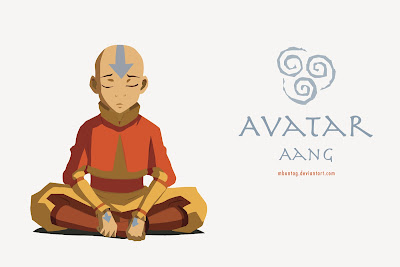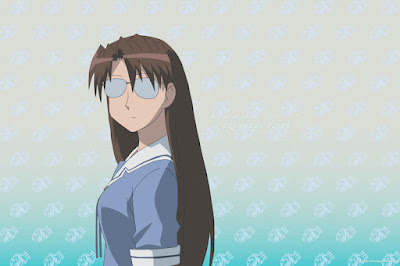Of course to think that manga and transsexual otakus are somehow more authentic than temples is wrongheaded, but this actually was our Japan, and we liked it here.
- Peter Carey
Happy New Year. Today I'm going to look at two very different travel memoirs about Japan that I read back-to-back during the holidays. Their only obvious similarity is that they exploit mainstream America's fascination of, and ignorance over, anime/manga as a jumping-off point for exploring Japanese culture. Be warned that examining the two together could induce whiplash.
In
Wrong about Japan: A Father's Journey with His Son Booker Prize winning novelist
Peter Carey and his twelve year old son
Charley take a brief trip to Japan. Fascinated by Charley's new obsession with manga and anime, Carey uses his literary contacts to arrange meetings with some of Japan's leading creators. Charley wants to get his photo taken with some of his heroes, while Carey hopes to bond with his son during the trip. But he is also interested in discovering the connection between manga and anime to traditional Japanese culture. He develops a number of theories which he unsuccessfully attempts to confirm in his creator interviews.
Carey proudly admits to being a poor reporter: He's not good at remembering names. Unable to speak Japanese, he conducts his interviews by submitting a list of questions beforehand. These are usually so inept that they are brushed aside by his subjects, and he fails to ask follow-up questions. Carey is forced to to step back and admit that he's only grown more perplexed by his inability to understand the Japanese mind.
Based on the various anime and manga Carey's consumed, the history of Japan can be mapped from its feudal era, the opening of the country by Commodore
Matthew Perry, World War II, the
Hiroshima bombing, and the post-war recovery. His ideas don't sound unreasonable, but his overanalyzing leads him to jump to hasty conclusions. For example he learns that
saya is Japanese for sword sheath. Therefore
Saya, the
katana wielding heroine of
Blood The Last Vampire, is synonymous to sword sheath. But a colleague rebuffs this as being too obvious meaning for most Japanese. The interviewees seem mostly put-off by his theorizing. During a meeting with a famous swordsmith, his queries about the supposedly mystical nature of his craft are impatiently dismissed with matter-of-the-fact answers. When he asks
Gundam creator
Yoshiyuki Tomino about what possible symbolism inspired him to use giant robots, Tomino points out that the robots were simply there to sell toys to children.

This isn't to say Carey doesn't learn a thing or two. Tomino claims to have been interested in removing all specific national elements from Gundam. When Carey insists there must still be some Japanese elements left over, Tomino (or the translator) counters "that there is maybe something in your own character which is interested in national identity." The writer of the franchise's massive official guide insists that the cockpit of the
mobile suit isn't the belly of the beast as Carey thought, but is more like a mother's womb. Fans of
Neon Genesis Evangelion are already familiar with that idea. His only truly successful exchange is with a survivor of the
Tokyo firebombing raids, which helps reinforce the popular onscreen image of national suffering found in the wartime drama
Grave of the Fireflies.
Unfortunately Carey's failure to find clear answers to all his earnest questioning leads to an even bigger failure to appreciate the nebulous nature of language and culture. For someone who deals in words this is a pretty big failure. Learning many of the different definitions of the term
otaku, he uses this as an example of how unique and baffling Japanese culture can be. Really? Is the Japanese language the only language that contains difficult-to-define terms with meanings that can change over time? Carey's too smart to use the word, but he is basically reinforcing the old idea of Japan as "inscrutable." Japanese nativists everywhere must be delirious with his observations.
At the heart of book is Carey's relationship with Charley. As the sullen, passive adolescent that Carey is attempting to get closer to, his failure to get manga and anime mirrors the generational gap between him and his son. Carey views Japan through the lens of its more traditional image: The Japan of temples,
ukiyo-e paintings, and
haiku. Carey's cluelessness apparently stems from his difficulty appreciating popular culture in general*, let alone one particularly obsessive subculture. His son on the other hand accepts manga and anime on it's own terms. He also has a grasp of modern technology that completely escapes his father. Watching him successfully navigate the labyrinth of Tokyo's subway systen, Carey comments with a litte bit of awe "You're a different species." Charley responds "We've mutated."**
Charley makes Carey promise before the trip not to show him the "Real Japan" - His words for traditional Japan. Carey breaks that promise once by forcing him to attend a
kabuki performance, which Charley later declares the worst four hours of his life. Not surprisingly Charley opposes Carey's pedagogical attempts to introduce a little bit of "culture" into the proceedings. Oh boy! His father must be
sooooooo proud of him. To be fair he is at that rebellious stage in his life. But Charley doesn't help himself by behaving like a stereotypically insular fanboy.
Charley is the uncommunicative type. He's unable or unwilling to express what he likes about manga and anime. He shows no interest in asking questions during the interviews conducted by Carey. While he may be the driving force behind the trip, as a character he's a black hole. This may be the reason why Carey creates a fictional friend for Charley to interact with called
Takashi. He is an ethereal presence, materializing unexpectedly when something is needed to spice-up the narrative. He provides a more vocal adolescent viewpoint, guiding Carey and Charley through the streets of
Akihabara and other youth hangouts.
The gap between the high-minded literary father, and his pop culture consuming son is never convincingly bridged during such a short trip, and this colors Carey's experiences about Japan. Perhaps if Carey were less overbearing and Charley were more engaging or articulate, this might have proved to be a more entertaining experience for Carey and the reader.
As the
Chip Kidd designed cover clues as in, Wrong About Japan is about two males exploring animated worlds mostly full of action, violence and war. In complete contrast, the cover to
Japan Ai: A Tall Girl’s Adventures in Japan implies that one is about to step into a world populated by cudly, mostly female characters. It is unapologetically in-your-face-girly: Pink is the predominant color scheme. Ball-jointed dolls and cosplay fashion are the main talking points. There are some cute little design touches such as printing the respective heights of the production staff next to their names in the book's credits page.
One important difference from the former book is that this is a comics-style illustrated travelogue.
Aimee Major Steinberger is a professional animator and is completely comfortable using images to convey information or a narrative. She draws in the slick linear style that is to be expected from an experienced animator, which she is capable of modulating into more complex realism as the need arises. Steinberger draws mostly intimate scenes, and she has the good eye for detail necessary for a effective travel journal. She draws mostly in black and white, but introduces color when appropriate to capturing the local ambience of a place.

Steinberger is also a doll enthusiast who has written articles for
Haute Doll magazine. When the Japanese doll company
Volks invites her to visit their headquarters in Tokyo, she readily accepts, and gets two of her otaku friends to accompany her. Her visit's itinerary starts in
Kyoto, makes a side trip to
Takarazuka, and ends in Tokyo. Every activity is fan-oriented in some way. While the visit to Kyoto's temples and shrines may not seem particularly otaku-centric, Steinberger's views of traditional Japan have been colored by her exposure to various manga and anime. She's aware of
mikos (shrine maidens) because of manga like
Sailor Moon. The trio visit an
onsen (hot spring bath) because almost every manga or anime character has spent time at an onsen at some point.
Takarazuka is known for the
Takarazuka Revue - An all-female musical theater company not only known for their staging of more conventional works, but also for their adaptations of various
shojo manga. Steinberger manages to catch a showing of
The Rose of Versailles. Despite (or maybe because of) her inability to understand a single word, she and her friends are moved to tears. Later they go to a salon that dresses their customers in costume to resemble their favorite on-stage characters.
Tokyo is naturally the highlight of the trip. Steinberger and her friends engage in a wide variety of otaku-related activities, including cosplaying at
Harajuku. The trip concludes at Volks offices with a surreal ceremony performed for every owner who orders a custom-made doll from the company.

Being a six-foot tall American, Steinberger is aware of how much she and her friends stick-out, and she's willing to play the part of the good tourist while in Japan. The book is full of good humored reporting of the sites they see, the strange things they encounter, the food they eat, and the little misadventures they have due to not being able to read the signs of the local transit systems.
Steinberger has no difficulty characterizing her entire visit as mediated through the lens of manga and anime. She neither claims to know or understand the "Real Japan," and she's perfectly unselfconscious about how much a fangirl she is. You'd have to be a cosplayer. It doesn't matter what country you're in: Dressing-up in costume and parading around in public will get you some strange looks. She's honest in admitting that the response from some of the people on the street seeing a freakishly large foreigner bedecked in
gothic lolita wasn't always favorable. But her experiences have not dimmed her appreciation of otaku culture. If anything her trip just affirms that she's right to be comfortable in her own skin.
Because of her familiarity with the otaku subculture, Steinberger seems to have very little trouble adapting to her surroundings. A more cynical reader would observe that her enjoyment would last as long as she stayed in the otaku bubble. Once the novelty wore off and she leaves the bubble, culture shock would set in. True, but Steinberger doesn't claim to be anything more than a very observant traveller and a very enthusiastic geek who just happens to like the same things the Japanese like.
--------
* Carey lost me when he called
Walt Disney a merely successful artist, as opposed to a truly great artist like
Hayao Miyazaki.
** Given that the Carey family lives in
New York, Charley's performance shouldn't come as a complete suprise.
















